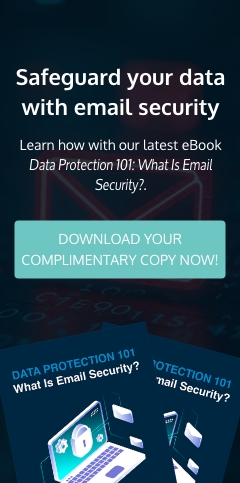Data security is a concern for everyone in today’s digital age. To ensure data protection against common cybercrimes, it’s important to understand the fundamentals. In this article, we'll take you through a beginner-friendly quiz on data loss prevention (DLP), covering the basics you need to know to safeguard your valuable information in the online world.
What is the primary goal of data loss prevention measures?
- To recover lost data
- To increase the speed of data transfer
- To prevent unauthorized access to data
Correct answer: C. To prevent unauthorized access to data
DLP measures help businesses protect sensitive information such as financial records, intellectual property, and customer data, from falling into the wrong hands. Through DLP, organizations can establish a security framework that actively prevents unauthorized and inappropriate access to or sharing of critical data.. This proactive approach can successfully mitigate the risk of data breaches, which often result in severe financial losses and legal liabilities.
Additionally, DLP measures contribute to regulatory compliance by ensuring data privacy and protection in line with industry-specific regulations such as GDPR or HIPAA. They aid companies in demonstrating their dedication to safeguarding confidential data, enhancing customer trust and loyalty..
True or false: Antivirus software is enough to protect data from cyberattacks.
- True
- False
Correct answer: B. False.
Though antivirus software is a valuable component of cybersecurity, it cannot adequately protect data from modern cyberattacks by itself. Cybercriminals have become more complex in their methodology, with their tactics evolving beyond the capabilities of traditional antivirus programs.
The main focus of antivirus software is identifying and removing known malware and viruses based on predefined patterns or signatures. However, antivirus may struggle to detect zero-day threats or advanced malware that uses polymorphic techniques to change its appearance. To enhance cybersecurity, use firewalls, patch management, two-factor authentication, endpoint detection and response, cloud-based business continuity planning, and security awareness training.
What is “phishing”?
- A type of cyberattack aimed at stealing sensitive information
- A method to physically secure data centers
- A way to organize and categorize data files
Correct answer: A. A type of cyberattack aimed at stealing sensitive information
Phishing is a type of cyberattack aimed at stealing sensitive information by tricking individuals into revealing it. Cybercriminals pretend to be trustworthy organizations, usually through fraudulent emails, messages, or websites, to deceive victims. These deceptive communications prompt recipients to provide sensitive data, such as credit card numbers, login credentials, or personal information.
Falling victim to phishing schemes can have severe consequences for businesses. Such breaches often lead to data exposure, identity theft, financial fraud, and compromised systems — resulting not only in financial losses but also damage to a company’s reputation.
To successfully combat these attacks, businesses need to train their employees to recognize phishing attempts, use email filtering solutions, and promote a workplace culture of cybersecurity awareness.
What is the purpose of encryption in data protection?
- To make data easier to read
- To compress data for storage efficiency
- To convert data into a secure format that only those authorized can read
Correct answer: C. To convert data into a secure format that only those authorized can read
Encryption serves the critical purpose of converting data into a secret code, allowing only authorized parties with the correct decryption key to access the information. It’s a practice especially useful for safeguarding financial records, personal data, or trade secrets.
Data encryption is a vital cybersecurity measure as it prevents unverified access to interception of, and tampering of sensitive data during transmission or while stored on devices and servers. It maintains confidentiality, ensuring that even if the data is stolen, unauthorized users cannot read it. Additionally, it bolsters regulatory compliance by helping organizations meet data privacy and security requirements.
True or false: Security risks refer to external cyberthreats to an organization.
- True
- False
Correct answer: B. False.
Security risks aren’t limited to external threats; they also encompass internal risks known as “insider threats.” These include employees, contractors, or anyone with authorized access to an organization’s systems and data.
Verizon’s 2023 Data Breach Investigations Report found that 74% of data breaches involve the human element, which includes insider threats. These can manifest as unintentional errors, misuse of access privileges, or even deliberate malicious actions by employees. Another internal risk is shadow IT, where employees introduce unauthorized or unapproved software and devices into the corporate network without IT department oversight. This can lead to security vulnerabilities, as these tools may not have incorporated adequate security measures.
So, how did you do?
4–5 correct answers: Congratulations! You have a solid grasp of data loss prevention concepts and cybersecurity best practices.
2–3 correct answers: You're on the right track, but there's room for improvement. Consider brushing up on your data loss prevention knowledge to enhance your cybersecurity skills.
0–1 correct answer: It's time to dive deeper into data loss prevention and cybersecurity. There's much more to learn, but you're taking the first steps toward improving your cybersecurity vocabulary.
Looking to enhance your data protection? Explore our tailor-made cybersecurity solutions to ensure your business stays secure in an ever-evolving digital world. Don’t wait — get your risk-free consultation with NetQuest today!


